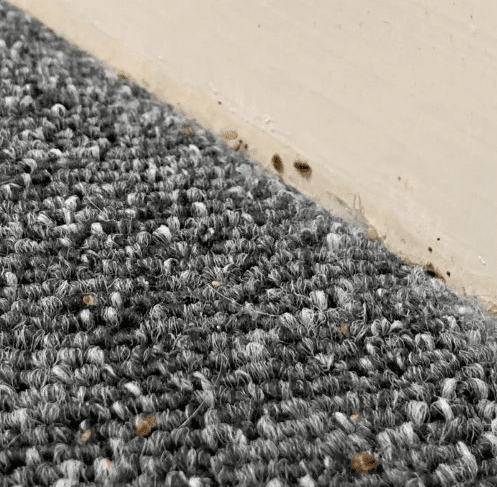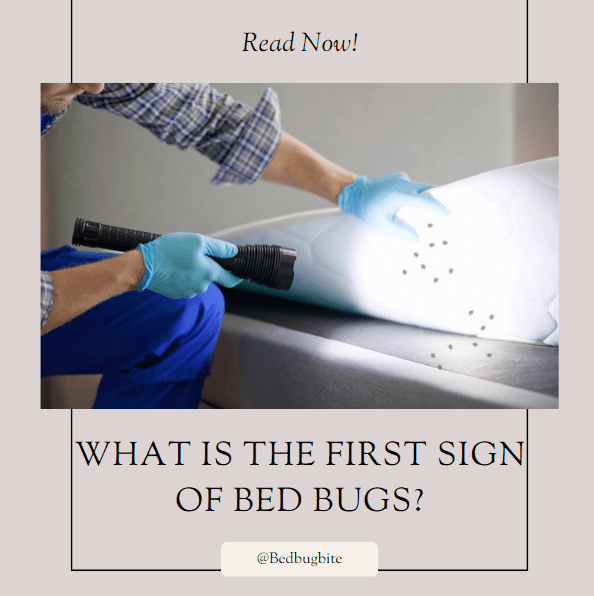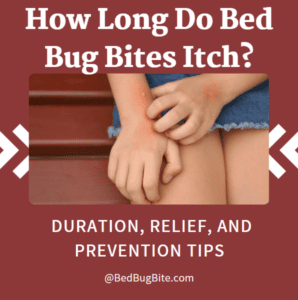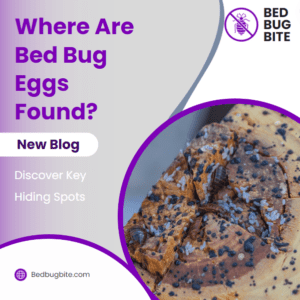Introduction:
Setting the Stage: Understanding the Importance of Early Detection
Bed bugs, those elusive pests that invade our homes and disrupt our peace of mind, are more than just a nuisance; they’re a serious concern for anyone seeking a good night’s sleep. The first sign of bed bugs is often subtle, easily overlooked, but crucial for swift action. As a bed bug knowledge expert with years of experience, I’m here to shed light on the importance of early detection. By recognizing the initial indicators of a bed bug infestation, you can take proactive measures to prevent further spread and minimize the impact on your home and wellbeing. Let’s delve into the world of bed bugs and uncover the telltale signs that signal their presence. But before we embark on this journey, it’s essential to grasp the significance of swift detection and decisive action. According to the Environmental Protection Agency (EPA), early detection is key to effective bed bug control.
Physical Signs of Bed Bugs
Visual Inspection Techniques

Identifying live bed bugs is the cornerstone of early detection. These nocturnal insects are adept at hiding in cracks, crevices, and bedding during the day, making them challenging to spot. However, with a keen eye and thorough examination, you can uncover their presence. Look for small, reddish-brown insects about the size of an apple seed. Check common hiding spots such as mattress seams, bed frames, and upholstered furniture. Additionally, keep an eye out for bed bug eggs and shells, which are translucent and often found near their hiding places. By conducting regular visual inspections, you can catch bed bugs in the act and prevent a full-blown infestation.
Bite Marks on Skin
Bed bug bites are another telltale sign of an infestation. These pesky insects feed on human blood, usually during the night while you’re asleep. Their bites often result in small, red welts that itch and may appear in clusters or rows on exposed skin. However, it’s essential to note that not everyone reacts to bed bug bites in the same way. Some people may have no reaction at all, while others may experience severe itching and discomfort. Differentiating bed bug bites from other insect bites can be challenging, but paying attention to bite patterns and the timing of symptoms can provide valuable clues. If you suspect bed bugs are the culprit behind your mysterious bites, it’s time to take action.
Behavioral Indicators
Unusual Odors
One of the more subtle signs of a bed bug infestation is the presence of a distinct odor. Bed bugs emit a musty, sweet smell that becomes more pronounced as their numbers increase. This odor is often described as being similar to the scent of coriander or overripe raspberries. If you detect an unusual smell in areas where bed bugs are known to hide, such as around your bed or furniture, it could indicate a significant infestation. Pay close attention to any lingering odors and take action promptly to address the problem.
Blood Stains on Bedding and Furniture
Another behavioral indicator of bed bugs is the presence of blood stains on bedding and furniture. When bed bugs feed, they often leave behind small droplets of blood on sheets, pillowcases, and upholstery. These stains may appear as tiny spots or streaks and can be a telltale sign of bed bug activity. Additionally, bed bugs may accidentally crush blood-filled bugs while moving around, leaving behind larger, reddish-brown stains on surfaces. If you notice unexplained blood stains on your bedding or furniture, it’s essential to investigate further for signs of bed bugs.
Environmental Clues
Dark Spots and Stains
One of the most common environmental clues of a bed bug infestation is the presence of dark spots and stains on surfaces. These spots are typically fecal matter left behind by bed bugs after they feed. They may appear as small, dark specks or streaks on bedding, mattresses, walls, or furniture. Bed bug feces contain digested blood, giving them a dark, rusty appearance. By carefully inspecting these areas for dark spots, you can pinpoint areas of bed bug activity and take appropriate measures to address the infestation.
Shed Exoskeletons
In addition to fecal stains, shed exoskeletons are another environmental clue that bed bugs leave behind. As bed bugs grow and mature, they molt, shedding their exoskeletons in the process. These shed skins are translucent and may appear as empty shells or husks near areas where bed bugs hide. Common hiding spots for shed exoskeletons include mattress seams, cracks in furniture, and behind baseboards. By identifying these remnants of bed bug molting, you can confirm the presence of an infestation and take steps to eliminate it.
Advanced Detection Methods
Using Bed Bug Detectors and Traps
For those seeking more advanced methods of detecting bed bugs, specialized detectors and traps can be invaluable tools. These devices are designed to lure bed bugs into traps or intercept them as they move around your home, providing an early warning of infestation. One popular type of bed bug trap is the pitfall trap, which uses a shallow container filled with a sticky substance to capture bed bugs as they crawl across surfaces. Another option is the CO2 trap, which mimics the carbon dioxide emitted by human breath to attract bed bugs. By strategically placing these traps in areas of suspected bed bug activity, you can monitor for signs of infestation and take proactive measures to address the problem.
Employing Bed Bug Dogs
In recent years, the use of specially trained dogs to detect bed bugs has gained popularity as an effective detection method. These highly trained canines are able to sniff out even the smallest traces of bed bugs with remarkable accuracy. Bed bug dogs are trained to recognize the scent of live bed bugs, bed bug eggs, and bed bug pheromones, making them invaluable assets in the fight against infestations. By employing the keen senses of these canine inspectors, homeowners and pest control professionals can pinpoint infestations quickly and accurately, allowing for targeted treatment and eradication efforts.
Conclusion
Recap of Key Points
In conclusion, identifying the first signs of a bed bug infestation is crucial for effective pest control and prevention. By recognizing physical, behavioral, and environmental indicators, you can take swift action to address infestations before they escalate. Visual inspection techniques, such as identifying live bed bugs and examining bite marks on the skin, provide valuable insights into the presence of bed bugs in your home. Additionally, paying attention to behavioral clues, such as unusual odors and blood stains on bedding, can help confirm suspicions of an infestation. Environmental clues, such as dark spots and shed exoskeletons, further corroborate the presence of bed bugs and provide essential information for targeted treatment efforts.
Empowering Readers to Take Action
Armed with this knowledge, readers can take proactive measures to protect themselves and their homes from the scourge of bed bugs. Regular inspections, thorough cleaning, and proper storage practices can all help prevent infestations from taking hold. Additionally, seeking professional pest control assistance at the first sign of bed bugs can ensure swift and effective eradication. By working together to educate and empower one another, we can create bed bug-free environments and enjoy a restful night’s sleep once again.




